Ford Transit 2014 User Manual

FORD TRANSIT Owner's Manual

The information contained in this publication was correct at the time of going to print. In the interest of continuous development, we reserve the right to change specifications, design or equipment at any time without notice or obligation. No part of this publication may be reproduced, transmitted, stored in a retrieval system or translated into any language in any form by any means without our written permission. Errors and omissions excepted.
© Ford Motor Company 2013
All rights reserved.
Part Number: CG3612en 12/2013 20131211085629

Table of Contents
Introduction |
|
About This Manual........................................... |
5 |
Symbols Glossary............................................. |
5 |
Data Recording.................................................. |
7 |
Replacement Parts |
|
Recommendation........................................ |
8 |
Mobile Communications |
|
Equipment...................................................... |
8 |
At a Glance |
|
Front Exterior Overview................................ |
10 |
Vehicle Interior Overview............................... |
11 |
Instrument Panel Overview - LHD............ |
12 |
Instrument Panel Overview - RHD........... |
13 |
Child Safety |
|
Installing Child Seats..................................... |
15 |
Child Seat Positioning................................... |
19 |
Child Safety Locks.......................................... |
23 |
Safety Belts |
|
Fastening the Safety Belts.......................... |
24 |
Safety Belt Height Adjustment................. |
25 |
Safety Belt Minder......................................... |
26 |
Supplementary Restraints |
|
System |
|
Principle of Operation................................... |
27 |
Driver Airbag..................................................... |
27 |
Passenger Airbag............................................ |
27 |
Side Airbags..................................................... |
29 |
Side Curtain Airbags..................................... |
29 |
Keys and Remote Controls |
|
General Information on Radio |
|
Frequencies................................................. |
30 |
Remote Control.............................................. |
30 |
Replacing a Lost Key or Remote |
|
Control........................................................... |
30 |
Locks |
|
Locking and Unlocking.................................. |
31 |
Security |
|
Passive Anti-Theft System......................... |
36 |
Anti-Theft Alarm............................................ |
36 |
Power Running Boards |
|
Using Power Running Boards.................... |
39 |
Steering Wheel |
|
Adjusting the Steering Wheel..................... |
41 |
Audio Control.................................................... |
41 |
Voice Control................................................... |
42 |
Cruise Control.................................................. |
42 |
Information Display Control....................... |
43 |
Wipers and Washers |
|
Windshield Wipers........................................ |
44 |
Autowipers....................................................... |
44 |
Windshield Washers..................................... |
45 |
Rear Window Wiper and Washers.......... |
46 |
Lighting |
|
General Information...................................... |
47 |
Lighting Control............................................... |
47 |
Autolamps........................................................ |
48 |
Instrument Lighting Dimmer..................... |
49 |
Headlamp Exit Delay.................................... |
49 |
Daytime Running Lamps............................ |
49 |
Front Fog Lamps............................................ |
50 |
Rear Fog Lamps............................................. |
50 |
Headlamp Leveling....................................... |
50 |
Cornering Lamps............................................. |
51 |
Direction Indicators........................................ |
51 |
Stepwell Lamps............................................... |
51 |
Interior Lamps................................................. |
52 |
1
Transit (TTG) Vehicles Built From: 06-01-2014, Vehicles Built Up To: 31-12-2014, CG3612en enGBR, Edition date: 12/2013

Table of Contents
Windows and Mirrors |
|
Cigar Lighter.................................................... |
90 |
|
Power Windows.............................................. |
53 |
Storage Compartments |
|
|
Exterior Mirrors................................................ |
54 |
|
||
Interior Mirror................................................... |
54 |
Cup Holders....................................................... |
91 |
|
Sliding Windows............................................. |
55 |
Overhead Console.......................................... |
91 |
|
Rear Quarter Windows................................. |
55 |
Ashtray................................................................ |
91 |
|
Instrument Cluster |
|
Bottle Holder.................................................... |
91 |
|
|
Under Seat Storage....................................... |
92 |
||
Gauges............................................................... |
56 |
Front Door Storage Compartment.......... |
93 |
|
Warning Lamps and Indicators................. |
57 |
Starting and Stopping the |
|
|
Audible Warnings and Indicators.............. |
61 |
|
||
Information Displays |
|
Engine |
|
|
|
General Information..................................... |
94 |
||
General Information |
62 |
Ignition Switch................................................ |
94 |
|
Steering Wheel Lock |
94 |
|||
Clock |
67 |
|||
Starting a Diesel Engine |
95 |
|||
Trip Computer |
67 |
|||
Diesel Particulate Filter |
95 |
|||
Personalized Settings |
68 |
|||
Switching Off the Engine |
96 |
|||
Information Messages |
68 |
|||
|
|
Climate Control |
|
Principle of Operation................................... |
73 |
Air Vents............................................................. |
73 |
Manual Climate Control............................... |
74 |
Hints on Controlling the Interior |
|
Climate........................................................... |
75 |
Rear Passenger Climate Controls............ |
76 |
Heated Windows and Mirrors..................... |
77 |
Auxiliary Heater............................................... |
77 |
Seats |
|
Sitting in the Correct Position.................... |
81 |
Head Restraints............................................... |
81 |
Manual Seats................................................... |
82 |
Power Seats..................................................... |
84 |
Rear Seats........................................................ |
86 |
Heated Seats................................................... |
88 |
Auxiliary Power Points |
|
Auxiliary Power Points................................. |
89 |
2
Unique Driving Character- |
|
istics |
|
Auto-Start-Stop............................................. |
97 |
Fuel and Refueling |
|
Safety Precautions........................................ |
99 |
Fuel Quality.................................................... |
100 |
Running Out of Fuel.................................... |
100 |
Catalytic Converter....................................... |
101 |
Selective Catalytic Reduction |
|
System......................................................... |
102 |
Refueling......................................................... |
104 |
Fuel Consumption....................................... |
106 |
Transmission |
|
Manual Transmission.................................. |
107 |
All-Wheel Drive |
|
Using All-Wheel Drive................................ |
108 |
Transit (TTG) Vehicles Built From: 06-01-2014, Vehicles Built Up To: 31-12-2014, CG3612en enGBR, Edition date: 12/2013

Table of Contents
Brakes |
|
Towing Points................................................. |
133 |
General Information.................................... |
109 |
Towing the Vehicle on Four Wheels...... |
134 |
Hints on Driving With Anti-Lock |
109 |
Driving Hints |
|
Brakes........................................................... |
|
||
Parking Brake.................................................. |
110 |
Breaking-In...................................................... |
135 |
Hill Start Assist................................................ |
111 |
Reduced Engine Performance................. |
135 |
Traction Control |
|
Economical Driving...................................... |
135 |
|
Cold Weather Precautions........................ |
136 |
|
Principle of Operation.................................. |
112 |
Driving Through Water................................ |
136 |
Using Traction Control................................. |
112 |
Floor Mats....................................................... |
136 |
Stability Control |
|
Principle of Operation.................................. |
113 |
Using Stability Control................................. |
113 |
Parking Aids |
|
Principle of Operation.................................. |
114 |
Parking Aid....................................................... |
114 |
Rear View Camera........................................ |
116 |
Cruise Control |
|
Principle of Operation.................................. |
118 |
Using Cruise Control..................................... |
118 |
Using Adaptive Cruise Control................. |
119 |
Driving Aids |
|
Speed Limiter................................................. |
124 |
Driver Alert....................................................... |
125 |
Lane Keeping System.................................. |
127 |
Eco Mode......................................................... |
128 |
Load Carrying |
|
General Information.................................... |
130 |
Roof Racks and Load Carriers................. |
130 |
Load Retaining Fixtures............................. |
130 |
Towing |
|
Towing a Trailer.............................................. |
132 |
Trailer Sway Control..................................... |
133 |
3
Roadside Emergencies |
|
Hazard Warning Flashers.......................... |
138 |
First Aid Kit...................................................... |
138 |
Warning Triangle........................................... |
138 |
Emergency Exit.............................................. |
138 |
Fuel Shutoff.................................................... |
138 |
Jump Starting the Vehicle......................... |
138 |
Fuses |
|
Fuse Box Locations....................................... |
141 |
Fuse Specification Chart........................... |
142 |
Changing a Fuse............................................. |
151 |
Maintenance |
|
General Information.................................... |
153 |
Opening and Closing the Hood............... |
153 |
Under Hood Overview - FWD.................. |
154 |
Under Hood Overview - AWD/RWD...... |
155 |
Engine Oil Dipstick....................................... |
156 |
Engine Oil Check........................................... |
156 |
Engine Coolant Check................................. |
157 |
Brake and Clutch Fluid Check.................. |
157 |
Power Steering Fluid Check..................... |
158 |
Washer Fluid Check..................................... |
158 |
Draining the Fuel Filter Water Trap........ |
158 |
Changing the 12V Battery.......................... |
159 |
Checking the Wiper Blades....................... |
161 |
Changing the Wiper Blades....................... |
161 |
Transit (TTG) Vehicles Built From: 06-01-2014, Vehicles Built Up To: 31-12-2014, CG3612en enGBR, Edition date: 12/2013

Table of Contents
Removing a Headlamp............................... |
162 |
Digital Radio................................................... |
232 |
|
Changing a Bulb............................................ |
163 |
Audio Input Jack........................................... |
233 |
|
Bulb Specification Chart........................... |
168 |
USB Port......................................................... |
234 |
|
Technical Specifications - FWD.............. |
170 |
Audio Troubleshooting.............................. |
234 |
|
Technical Specifications - RWD............... |
171 |
SYNC™ |
|
|
Technical Specifications - AWD.............. |
172 |
|
||
Vehicle Care |
|
General Information................................... |
235 |
|
|
Using Voice Recognition........................... |
236 |
||
Cleaning the Exterior................................... |
174 |
Using SYNC™ With Your Phone............ |
239 |
|
Cleaning the Interior.................................... |
174 |
SYNC™ Applications and Services...... |
250 |
|
Repairing Minor Paint Damage................ |
175 |
Using SYNC™ With Your Media |
|
|
Cleaning the Alloy Wheels......................... |
175 |
Player........................................................... |
256 |
|
Wheels and Tires |
|
SYNC™ Troubleshooting......................... |
263 |
|
|
Navigation |
|
||
General Information.................................... |
176 |
|
||
Temporary Mobility Kit............................... |
176 |
Navigation........................................................ |
271 |
|
Tire Care........................................................... |
179 |
Appendices |
|
|
Using Winter Tires........................................ |
180 |
280 |
||
Using Snow Chains |
180 |
Electromagnetic compatibility.............. |
||
End User License Agreement |
281 |
|||
Tire Pressure Monitoring System........... |
180 |
|||
Changing a Road Wheel............................ |
184 |
|
|
|
Technical Specifications........................... |
190 |
|
|
|
Capacities and Specific- |
|
|
|
|
ations |
|
|
|
|
Vehicle Dimensions..................................... |
195 |
|
|
|
Towbar Dimensions................................... |
200 |
|
|
|
Vehicle Identification Plate..................... |
204 |
|
|
|
Vehicle Identification Number............... |
206 |
|
|
|
Fuel Consumption Figures....................... |
206 |
|
|
|
Audio System |
|
|
|
|
General Information................................... |
207 |
|
|
|
Audio unit....................................................... |
208 |
|
|
|
Audio unit - Vehicles With: AM/FM/ |
217 |
|
|
|
CD................................................................... |
|
|
||
Audio unit - Vehicles With: SYNC/ |
221 |
|
|
|
Navigation System................................... |
|
|
||
Audio unit - Vehicles With: SYNC/AM/ |
|
|
||
FM/CD.......................................................... |
227 |
|
|
|
|
|
4 |
|
|
Transit (TTG) Vehicles Built From: 06-01-2014, Vehicles Built Up To: 31-12-2014, CG3612en enGBR, Edition date: 12/2013

Introduction
ABOUT THIS MANUAL
Thank you for choosing Ford. We recommend that you take some time to get to know your vehicle by reading this manual. The more that you know about it, the greater the safety and pleasure you will get from driving it.
WARNING
Driving while distracted can result in loss of vehicle control, crash and injury. We strongly recommend that
you use extreme caution when using any device that may take your focus off the road. Your primary responsibility is the safe operation of your vehicle. We recommend against the use of any handheld device while driving and encourage the use of voice-operated systems when possible. Make sure you are aware of all applicable local laws that may affect the use of electronic devices while driving.
Note: This manual describes product features and options available throughout the range of available models, sometimes even before they are generally available. It may describe options not fitted to your vehicle.
Note: Some of the illustrations in this manual may be used for different models, so may appear different to you on your vehicle. However, the essential information in the illustrations is always correct.
Note: Always use and operate your vehicle in line with all applicable laws and regulations.
Note: Pass on this manual when selling your vehicle. It is an integral part of the vehicle.
This manual may qualify the location of a component as left-hand side or right-hand side. The side is determined when facing forward in the seat.
5
A Right-hand side
BLeft-hand side
Protecting the Environment
You must play your part in protecting the environment. Correct vehicle usage and the authorized disposal of waste, cleaning and lubrication materials are significant steps toward this aim.
SYMBOLS GLOSSARY
These are some of the symbols you may see on your vehicle.
Safety alert
See Owner's Manual
Air conditioning system
Anti-lock braking system
Avoid smoking, flames or sparks
Battery
Transit (TTG) Vehicles Built From: 06-01-2014, Vehicles Built Up To: 31-12-2014, CG3612en enGBR, Edition date: 12/2013
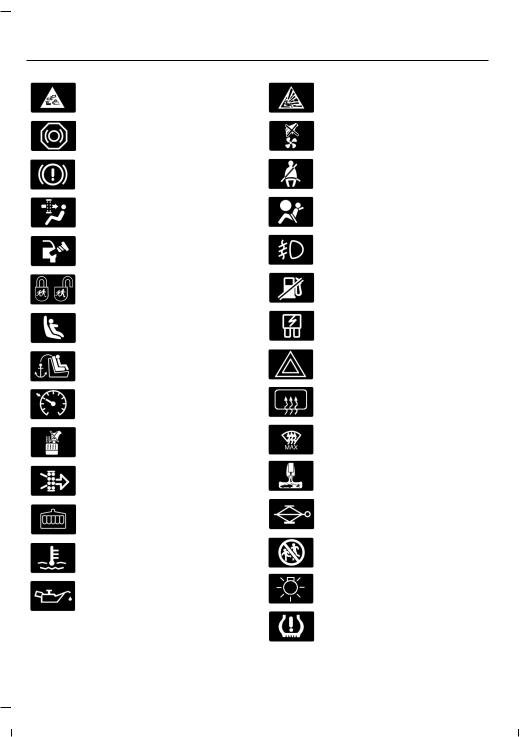
Introduction
Battery acid
Brake fluid - non petroleum based
Brake system
Cabin air filter
Check fuel cap
Child safety door lock or unlock
Child seat lower anchor
Child seat tether anchor
Cruise control
Do not open when hot
Engine air filter
Engine coolant
Engine coolant temperature
Engine oil
6
Explosive gas
Fan warning
Fasten safety belt
Front airbag
Front fog lamps
Fuel pump reset
Fuse compartment
Hazard warning flashers
Heated rear window
Heated windshield
Interior luggage compartment release
Jack
Keep out of reach of children
Lighting control
Low tire pressure warning
Transit (TTG) Vehicles Built From: 06-01-2014, Vehicles Built Up To: 31-12-2014, CG3612en enGBR, Edition date: 12/2013

Introduction
Maintain correct fluid level
Note operating instructions
Panic alarm
Parking aid
Parking brake
Power steering fluid
Power windows front/rear
Power window lockout
Service engine soon
Side airbag
Shield the eyes
Stability control
Windshield wash and wipe
DATA RECORDING
A large number of electronic components of your vehicle contain data storage modules temporarily or permanently storing technical data about the condition of the vehicle, events and errors.
In general, this technical information documents the condition of parts, modules, systems or the environment:
•Operating conditions of system components (e.g. filling levels).
•Status messages of the vehicle and its individual components (e.g. number of wheel revolutions/rotational speed, deceleration, lateral acceleration).
•Malfunction and defects in important system components (e.g. lighting and brake system).
•Vehicle reactions in particular driving situations (e.g. inflation of an airbag, activation of the stability regulation system).
•Environmental conditions (e.g. temperature).
These data are exclusively technical and help identification and correction of errors as well as optimisation of vehicle functions. Motion profiles indicating travelled routes cannot be created with these data.
If services are used (e.g. repair works, service processes, warranty cases, quality assurance), employees of the service network (including manufacturers) are able to read out this technical information from the event and error data storage modules using special diagnostic devices. If required, you will receive further information. After an error has been corrected, these data are deleted from the error storage module or they are constantly overwritten.
7
Transit (TTG) Vehicles Built From: 06-01-2014, Vehicles Built Up To: 31-12-2014, CG3612en enGBR, Edition date: 12/2013

Introduction
When using the vehicle, situations may occur in which these technical data related to other information (accident report, damages on the vehicle, witness statements etc.) may be associated with a specific person - possibly, with the assistance of an expert.
Additional functions contractually agreed upon with the client (e.g. vehicle location in emergency cases) allow the transmission of particular vehicle data from the vehicle.
REPLACEMENT PARTS RECOMMENDATION
Your vehicle has been built to the highest standards using quality parts. We recommend that you demand the use of genuine Ford and Motorcraft parts whenever your vehicle requires scheduled maintenance or repair. You can clearly identify genuine Ford and Motorcraft parts by looking for the Ford, FoMoCo or Motorcraft branding on the parts or their packaging.
Scheduled Maintenance and
Mechanical Repairs
One of the best ways for you to make sure that your vehicle provides years of service is to have it maintained in line with our recommendations using parts that conform to the specifications detailed in this Owner’s Manual. Genuine Ford and Motorcraft parts meet or exceed these specifications.
Collision Repairs
We hope that you never experience a collision, but accidents do happen. Genuine Ford replacement collision parts meet our stringent requirements for fit, finish, structural integrity, corrosion protection and dent resistance. During vehicle
development we validate these parts deliver the intended level of protection as a whole system. A great way to know for sure you are getting this level of protection is to use genuine Ford replacement collision parts.
Warranty on Replacement Parts
Genuine Ford and Motorcraft replacement parts are the only replacement parts that benefit from a Ford Warranty. Damage caused to your vehicle as a result of the failure of non-Ford parts may not be covered by the Ford Warranty. For additional information, refer to the terms and conditions of the Ford Warranty.
MOBILE COMMUNICATIONS EQUIPMENT
Using mobile communications equipment is becoming increasingly important in the conduct of business and personal affairs. However, you must not compromise your own or others’ safety when using such equipment. Mobile communications can enhance personal safety and security when appropriately used, particularly in emergency situations. Safety must be paramount when using mobile communications equipment to avoid negating these benefits. Mobile communication equipment includes, but is not limited to, cellular phones, pagers, portable email devices, text messaging devices and portable two-way radios.
8
Transit (TTG) Vehicles Built From: 06-01-2014, Vehicles Built Up To: 31-12-2014, CG3612en enGBR, Edition date: 12/2013
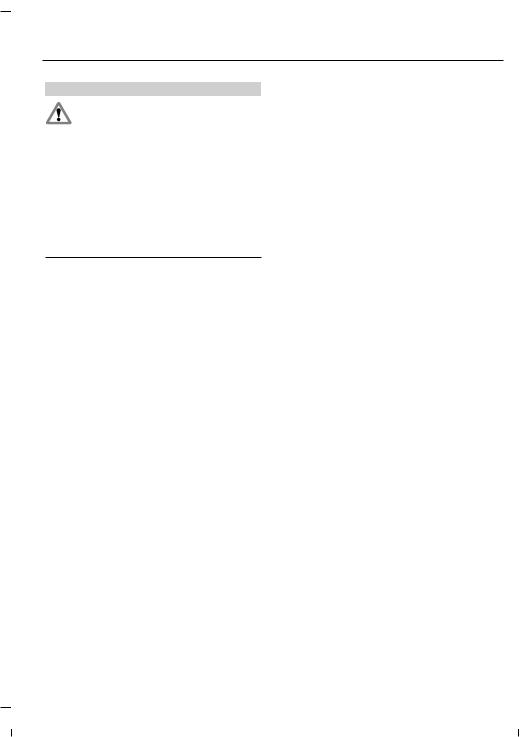
Introduction
WARNING
Driving while distracted can result in loss of vehicle control, crash and injury. We strongly recommend that
you use extreme caution when using any device that may take your focus off the road. Your primary responsibility is the safe operation of your vehicle. We recommend against the use of any hand-held device while driving and encourage the use of voice-operated systems when possible. Make sure you are aware of all applicable local laws that may affect the use of electronic devices while driving.
9
Transit (TTG) Vehicles Built From: 06-01-2014, Vehicles Built Up To: 31-12-2014, CG3612en enGBR, Edition date: 12/2013

At a Glance
FRONT EXTERIOR OVERVIEW
ASee Maintenance (page 153).
B See Changing the Wiper Blades (page 161).
C See Locking and Unlocking (page 31).
DSee Wheels and Tires (page 176).
ESee Technical Specifications (page 190).
FSee Refueling (page 104). See SelectiveCatalyticReductionSystem (page 102).
G See Changing a Bulb (page 163).
HSee Towing Points (page 133).
10
Transit (TTG) Vehicles Built From: 06-01-2014, Vehicles Built Up To: 31-12-2014, CG3612en enGBR, Edition date: 12/2013
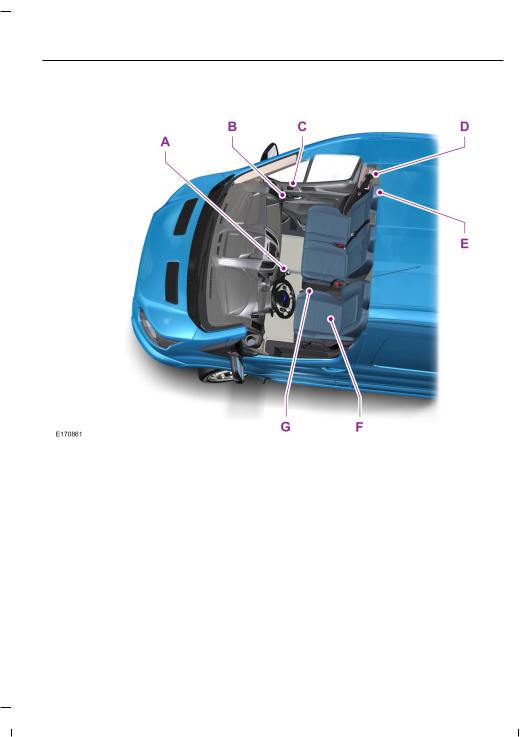
At a Glance
VEHICLE INTERIOR OVERVIEW
A See Manual Transmission (page 107).
B See Locking and Unlocking (page 31).
CSee Power Windows (page 53).
D See Fastening the Safety Belts (page 24).
E See Head Restraints (page 81).
FSee Manual Seats (page 82).
GSee Parking Brake (page 110). See Hill Start Assist (page 111).
11
Transit (TTG) Vehicles Built From: 06-01-2014, Vehicles Built Up To: 31-12-2014, CG3612en enGBR, Edition date: 12/2013

At a Glance
INSTRUMENT PANEL OVERVIEW - LHD
ASee Air Vents (page 73).
BSee Auto-Start-Stop (page 97). See Parking Aid (page 114).
C See Direction Indicators (page 51). See Lighting Control (page 47). D See Information Displays (page 62).
ESee Instrument Cluster (page 56).
F See Audio Control (page 41). See Voice Control (page 42).
GSee Wipers and Washers (page 44).
H See Heated Windows and Mirrors (page 77).
I Information and entertainment display.
JSee Audio System (page 207).
KSee Locking and Unlocking (page 31).
L See Hazard Warning Flashers (page 138).
MSee Climate Control (page 73).
12
Transit (TTG) Vehicles Built From: 06-01-2014, Vehicles Built Up To: 31-12-2014, CG3612en enGBR, Edition date: 12/2013
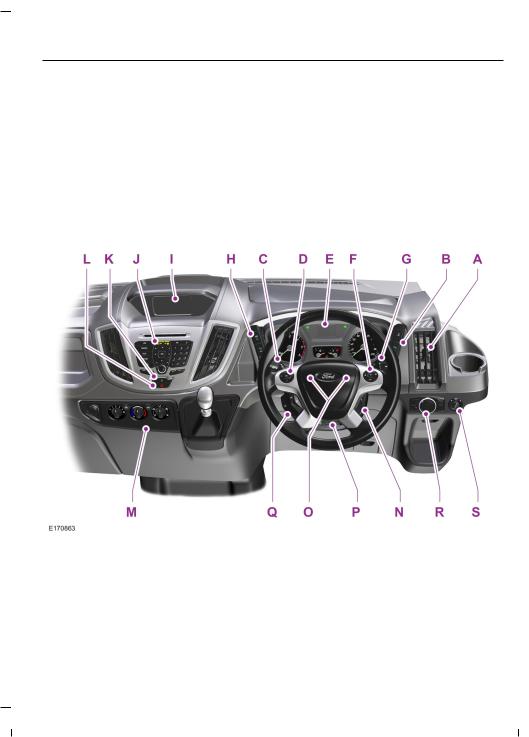
At a Glance
NSee Ignition Switch (page 94).
OHorn
P See Adjusting the Steering Wheel (page 41).
Q See Cruise Control (page 118).
RSee Lighting (page 47).
SSee Exterior Mirrors (page 54).
INSTRUMENT PANEL OVERVIEW - RHD
ASee Air Vents (page 73).
BSee Auto-Start-Stop (page 97). See Parking Aid (page 114).
C See Direction Indicators (page 51). See Lighting Control (page 47). D See Information Displays (page 62).
ESee Instrument Cluster (page 56).
13
Transit (TTG) Vehicles Built From: 06-01-2014, Vehicles Built Up To: 31-12-2014, CG3612en enGBR, Edition date: 12/2013

At a Glance
F See Audio Control (page 41). See Voice Control (page 42).
GSee Wipers and Washers (page 44).
H See Heated Windows and Mirrors (page 77). I Information and entertainment display.
JSee Audio System (page 207).
KSee Locking and Unlocking (page 31).
L See Hazard Warning Flashers (page 138).
M See Climate Control (page 73).
NSee Ignition Switch (page 94).
OHorn
P See Adjusting the Steering Wheel (page 41). Q See Cruise Control (page 118).
RSee Lighting (page 47).
SSee Exterior Mirrors (page 54).
14
Transit (TTG) Vehicles Built From: 06-01-2014, Vehicles Built Up To: 31-12-2014, CG3612en enGBR, Edition date: 12/2013

Child Safety
INSTALLING CHILD SEATS |
WARNINGS |
WARNINGS
Extreme Hazard! Never use a rearward facing child restraint on a seat protected by an active airbag in
front of it. Death or serious injury to the child can occur.
Your vehicle is equipped with a passenger airbag deactivation switch. See Passenger Airbag
(page 27). You must switch the airbag off when using a rearward facing child seat on the front seat. Make sure you switch the airbag back on following removal of the rearward facing child seat.
Use an approved child seat to secure children less than 60 in (150 cm) tall on the rear seat.
Read and follow the manufacturer’s instructions when you are installing a child seat.
 Do not modify child seats in any way.
Do not modify child seats in any way.
Do not hold a child on your lap when your vehicle is moving.
Do not leave unattended children in your vehicle.
If your vehicle has been involved in a crash, have the child seats checked by an authorized dealer.
Only child seats certified to ECE-R44.03 (or later) have been tested and approved for use in your vehicle. A choice of these are available from an authorized dealer.
Note: Mandatory use of child seats varies from country to country.
Child Seats for Different Mass Groups
Use the correct child seat as follows:
15
Transit (TTG) Vehicles Built From: 06-01-2014, Vehicles Built Up To: 31-12-2014, CG3612en enGBR, Edition date: 12/2013

Child Safety
Rearward Facing Baby Safety Seat
Secure children that weigh less than 29 lb (13 kg) in a rearward facing baby safety seat (Group 0+) on the rear seat.
Child Safety Seat
Secure children that weigh between 29 lb (13 kg) and 40 lb (18 kg) in a child safety seat (Group 1) on the rear seat.
Booster Seats
WARNINGS
Do not install a booster seat or a booster cushion with only the lap strap of the safety belt.
Do not install a booster seat or a booster cushion with a safety belt that is slack or twisted.
Do not put the safety belt under your child’s arm or behind their back.
Do not use pillows, books or towels to boost your child’s height.
Make sure that your children sit in an upright position.
When using a child seat on a rear seat, the child seat must rest tightly against the vehicle seat. It must not
touch the head restraint. If necessary remove the head restraint. See Head Restraints (page 81).
You must reinstall the head restraint following the removal of the child seat. See Head Restraints (page
81).
Secure children that weigh more than 33 lb (15 kg) but are less than 60 in (150 cm) tall in a booster seat or a booster cushion.
16
Transit (TTG) Vehicles Built From: 06-01-2014, Vehicles Built Up To: 31-12-2014, CG3612en enGBR, Edition date: 12/2013
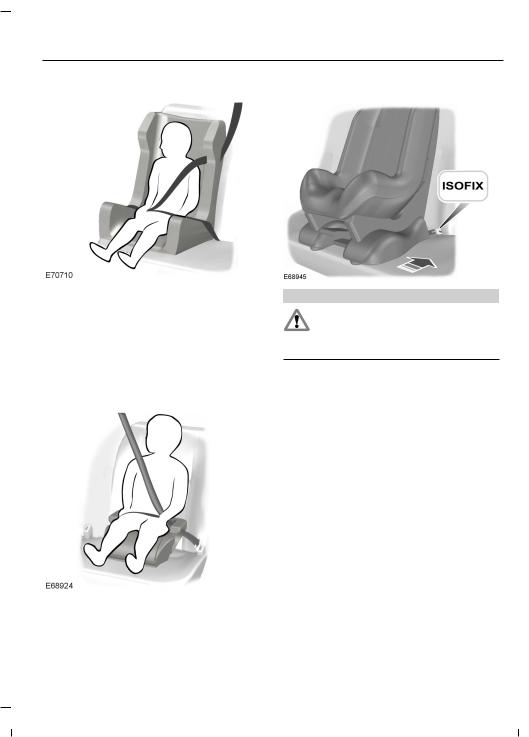
Child Safety
Booster Seat (Group 2)
We recommend that you use a booster seat that combines a cushion with a backrest instead of a booster cushion only. The raised seating position will allow you to position the shoulder strap of the adult safety belt over the center of your child’s shoulder and the lap strap tightly across their hips.
Booster Cushion (Group 3)
ISOFIX Anchor Points
WARNING
Use an anti-rotation device when using the ISOFIX system. We recommend the use of a top tether
or support leg.
Your vehicle has ISOFIX anchor points that accommodate universally approved ISOFIX child seats.
The ISOFIX system has two rigid attachment arms on the child seat that attach to anchor points on the second row seats, where the cushion and backrest meet. Tether anchor points are fitted to the underside or rear of the second row seats for child seats with a top tether.
Note: When you are purchasing an ISOFIX seat, make sure that you know the correct mass group and ISOFIX size class for the intended seating locations. See Child Seat Positioning (page 19).
17
Transit (TTG) Vehicles Built From: 06-01-2014, Vehicles Built Up To: 31-12-2014, CG3612en enGBR, Edition date: 12/2013

Child Safety
Attaching a Child Seat with Top Tethers
WARNING
Do not attach the top tether strap to anything other than the correct top tether strap anchor point.
Follow the child seat manufacturer's instructions for installing a child seat with a top tether.
Type 1
Type 2
Attaching a Child Seat with a Support Leg
WARNINGS
Make sure the support leg is long enough to reach the vehicle floor.
Make sure that the child seat manufacturer lists your vehicle as suitable for use with this type of child
seat.
Follow the child seat manufacturer's instructions for installing a child seat with a support leg.
18
Transit (TTG) Vehicles Built From: 06-01-2014, Vehicles Built Up To: 31-12-2014, CG3612en enGBR, Edition date: 12/2013

Child Safety
CHILD SEAT POSITIONING
WARNINGS
See an authorized dealer for the latest details relating to our recommended child seats.
WARNINGS
Extreme Hazard! Do not use a rearward facing child seat on a seat protected by an air bag in front of it!
When using a child seat with a support leg, the support leg must rest securely on the floor.
You must reinstall the head restraint following the removal of the child seat. See Head Restraints (page
81).
When using a child seat with a safety belt, make sure that the safety belt is not slack or twisted.
Make sure the child seat rests tightly against the vehicle seat. If necessary, adjust the seatback to an upright
position. Failure to follow this warning could result in serious personal injury or death.
Note: When using a child seat on a front seat, always adjust the front passenger seat to its fully rearward position. If it proves difficult to tighten the lap section of the safety belt without slack remaining, adjust the seatback to the fully upright position and raise the height of the seat. See Seats (page 81).
19
Transit (TTG) Vehicles Built From: 06-01-2014, Vehicles Built Up To: 31-12-2014, CG3612en enGBR, Edition date: 12/2013

Child Safety
Seating positions
Front passenger seat with airbag ON
Front passenger seat with airbag OFF
Rear seats - second row, center position - bus
Rear seats - second row, outboard positions and third row to sixth row - bus
Rear seats - second row - double cab in van
Rear seats - second row - double chassis cab
|
Mass group categories |
|
||
0 |
0+ |
1 |
2 |
3 |
Up to lb |
Up to lb |
Range lb |
Range lb |
Range lb |
(kg) |
(kg) |
(kg) |
(kg) |
(kg) |
22 lb |
29 lb |
20–40 lb |
33–55 lb |
49–79 lb |
(10 kg) |
(13 kg) |
(9–18kg) (15–25kg) |
(22–36kg) |
|
X |
X |
UF¹ |
UF¹ |
UF¹ |
U¹ |
U¹ |
U¹ |
U¹ |
U¹ |
U |
U |
U |
U |
U |
L |
L |
L |
L |
L |
L |
L |
L |
L |
L |
L |
L |
L |
L |
L |
20
Transit (TTG) Vehicles Built From: 06-01-2014, Vehicles Built Up To: 31-12-2014, CG3612en enGBR, Edition date: 12/2013

Child Safety
Seating positions
Rear seats - second row - kombi
Rear seats - third row - kombi
|
Mass group categories |
|
||
0 |
0+ |
1 |
2 |
3 |
Up to lb |
Up to lb |
Range lb |
Range lb |
Range lb |
(kg) |
(kg) |
(kg) |
(kg) |
(kg) |
22 lb |
29 lb |
20–40 lb |
33–55 lb |
49–79 lb |
(10 kg) |
(13 kg) |
(9–18kg) (15–25kg) |
(22–36kg) |
|
L |
L |
L |
L |
L |
L |
L |
L |
L |
L |
L Suitable only for the following child seats:
•Group 0 and 0+ Britax Baby-safe plus (E1-04301146).
•Group 1 Maxi-Cosi priori XP (E1-04301153).
•Group 2 and 3 Britax kid (E1-04301148).
U Suitable for universal category child seats approved for use in this mass group.
U¹ Suitable for universal category child seats approved for use in this mass group. However, we recommend that you secure children in a government approved child seat, on the rear seat.
UF¹ Suitable for universal category forward facing child restraint systems. However, we recommend that you secure children in a government approved child seat, on the rear seat.
X Not suitable for children in this mass group.
21
Transit (TTG) Vehicles Built From: 06-01-2014, Vehicles Built Up To: 31-12-2014, CG3612en enGBR, Edition date: 12/2013

Child Safety
ISOFIX Child Seats
|
|
Mass group categories |
|||
|
|
0 |
0+ |
1 |
|
|
|
Up to lb |
Up tolb |
Range lb |
|
Seating positions |
(kg) |
(kg) |
(kg) |
||
22 lb |
29 lb |
20–40 lb |
|||
|
|
||||
|
|
(10 kg) |
(13 kg) |
(9–18 kg) |
|
|
|
Baby safety seat |
Child |
||
|
|
safety seat |
|||
|
|
|
|
||
Rear ISOFIX - second |
Size type |
IU |
IU |
IU |
|
row - bus |
Size class |
E |
D, E |
A, B, B1, D |
|
|
|||||
Rear ISOFIX - second |
Size type |
IU |
IU |
IU |
|
row - double cab in van |
Size class |
E |
C, D, E |
A, B, B1, C, |
|
|
|
D |
|||
|
|
|
|
||
Rear ISOFIX - second |
Size type |
X |
X |
IU |
|
row - double chassis |
Size class |
A, B, B1 |
|||
cab |
|
|
|||
Rear ISOFIX - second |
Size type |
IU |
IU |
IU |
|
row - kombi |
Size class |
E |
D, E |
A, B, B1, D |
|
|
|||||
IU Suitable for universal category ISOFIX child seats approved for use in this mass group.
Note: When you are purchasing an ISOFIX child seat, make sure that you know the correct mass group and ISOFIX size class for the intended seating locations.
22
Transit (TTG) Vehicles Built From: 06-01-2014, Vehicles Built Up To: 31-12-2014, CG3612en enGBR, Edition date: 12/2013

Child Safety
CHILD SAFETY LOCKS
WARNING
You cannot open the doors from inside if you have put the child safety locks on.
The childproof locks are located on the rear edge of each rear door and must be set separately for each door.
Left-Hand Side
Turn counterclockwise to lock and clockwise to unlock.
Right-Hand Side
Turn clockwise to lock and counterclockwise to unlock.
23
Transit (TTG) Vehicles Built From: 06-01-2014, Vehicles Built Up To: 31-12-2014, CG3612en enGBR, Edition date: 12/2013

Safety Belts
FASTENING THE SAFETY
BELTS
WARNINGS
Insert the tongue into the buckle until you hear a distinct click. You have not fastened the safety belt correctly
if you do not hear a distinct click.
Make sure that your safety belt is securely stored away and is not outside your vehicle when closing the
door.
Pull the safety belt out steadily. It may lock if you pull it sharply or if your vehicle is on a slope.
Press the red button on the buckle to release the safety belt. Hold the tongue and let it retract completely and smoothly to its stowed position.
Using Safety Belts During
Pregnancy
WARNING
Position the safety belt correctly for your safety and that of your unborn child. Do not use only the lap strap
or the shoulder strap.
24
Transit (TTG) Vehicles Built From: 06-01-2014, Vehicles Built Up To: 31-12-2014, CG3612en enGBR, Edition date: 12/2013

Safety Belts
Pregnant women should always wear their safety belt. The lap belt portion of a combination lap and shoulder safety belt should be positioned low across the hips below the belly and worn as tight as comfort will allow. The shoulder belt should be positioned to cross the middle of the shoulder and the center of the chest.
SAFETY BELT HEIGHT
ADJUSTMENT
WARNING
Position the safety belt height adjuster so that the belt rests across the middle of your shoulder. Failure
to adjust the safety belt correctly could reduce the effectiveness of the safety belt and increase the risk of injury in a collision.
Front Safety Belt
1.Support the safety belt loop while pressing the adjuster button.
2.Slide the adjuster to the desired position then release the button.
3.Pull down on the safety belt loop to make sure it is secure in position.
Rear Safety Belt
WARNING
The occupant must make sure that the slider is above the line.
Adjust the lower edge of the slider so that it is above the white line.
If, when sitting upright, your shoulder is below the white line, you can adjust the slider to a position below the line so that the belt rests across the middle of your shoulder.
25
Transit (TTG) Vehicles Built From: 06-01-2014, Vehicles Built Up To: 31-12-2014, CG3612en enGBR, Edition date: 12/2013
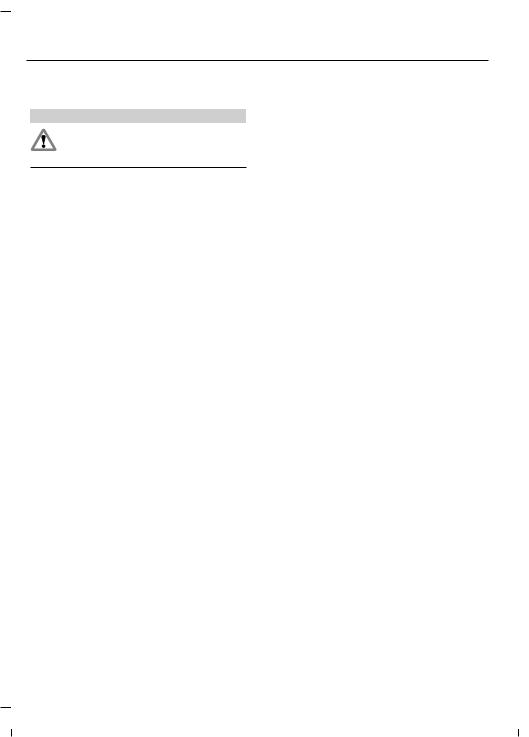
Safety Belts
SAFETY BELT MINDER
WARNING
The system will only provide protection when you use the safety belt correctly.
The warning lamp illuminates and an audible warning will sound when the following conditions have been met:
•The driver's safety belt has not been fastened.
•Your vehicle exceeds a relatively low speed.
It will also illuminate when the driver's safety belt is unfastened when your vehicle is moving.
If you do not fasten the driver's safety belt both the audible and visual warnings will switch off automatically after approximately five minutes.
TurningtheSafetyBeltMinderOff
See an authorized dealer.
26
Transit (TTG) Vehicles Built From: 06-01-2014, Vehicles Built Up To: 31-12-2014, CG3612en enGBR, Edition date: 12/2013

Supplementary Restraints System
PRINCIPLE OF OPERATION
WARNINGS
Extreme Hazard! Do not use a rearward facing child restraint on a seat protected by an airbag in front
of it!
Do not modify the front of your vehicle in any way. This could adversely affect deployment of the
airbags.
Wear a safety belt and keep sufficient distance between yourself and the steering wheel. Only when
you use the safety belt properly, can it hold you in a position that allows the airbag to achieve its optimum effect. See Sitting in the Correct Position (page 81).
Repairs to the steering wheel, steering column, seats, airbags and safety belts must be carried out by
an authorized dealer.
Keep the areas in front of the airbags free from obstruction. Do not affix anything to or over the airbag covers.
Do not puncture the seat with sharp objects. This could damage and adversely affect deployment of the
airbags.
Use seat covers designed for seats with side airbags. Have these fitted by an authorized dealer.
Note: You will hear a loud bang and see a cloud of harmless powdery residue if an airbag deploys. This is normal.
Note: The front passenger airbag protects both positions of a double seat.
Note: Only wipe airbag covers with a damp cloth.
DRIVER AIRBAG
The airbag will deploy during significant frontal collisions or collisions that are up to 30 degrees from the left or the right. The airbag will inflate within a few thousandths of a second and deflate on contact with the occupant, thus cushioning forward body movement. During minor frontal collisions, overturns, rear collisions and side collisions, the airbag will not deploy.
PASSENGER AIRBAG
27
Transit (TTG) Vehicles Built From: 06-01-2014, Vehicles Built Up To: 31-12-2014, CG3612en enGBR, Edition date: 12/2013

Supplementary Restraints System
The airbag will deploy during significant frontal collisions or collisions that are up to 30 degrees from the left or the right. The airbag will inflate within a few thousandths of a second and deflate on contact with the occupant, thus cushioning forward body movement. During minor frontal collisions, overturns, rear collisions and side collisions, the airbag will not deploy.
Switching the Passenger Airbag
Off
WARNING
You must switch the airbag off when using a rearward facing child seat on the front seat.
The key switch and the airbag deactivation warning lamp are located in the instrument panel.
A Switch off
BSwitch on
Turn the switch to position A.
When you switch the ignition on, check that the airbag deactivation warning lamp illuminates.
Switching the Passenger Airbag
On
WARNING
You must switch the airbag on when you are not using a child seat on the front seat.
28
Transit (TTG) Vehicles Built From: 06-01-2014, Vehicles Built Up To: 31-12-2014, CG3612en enGBR, Edition date: 12/2013
